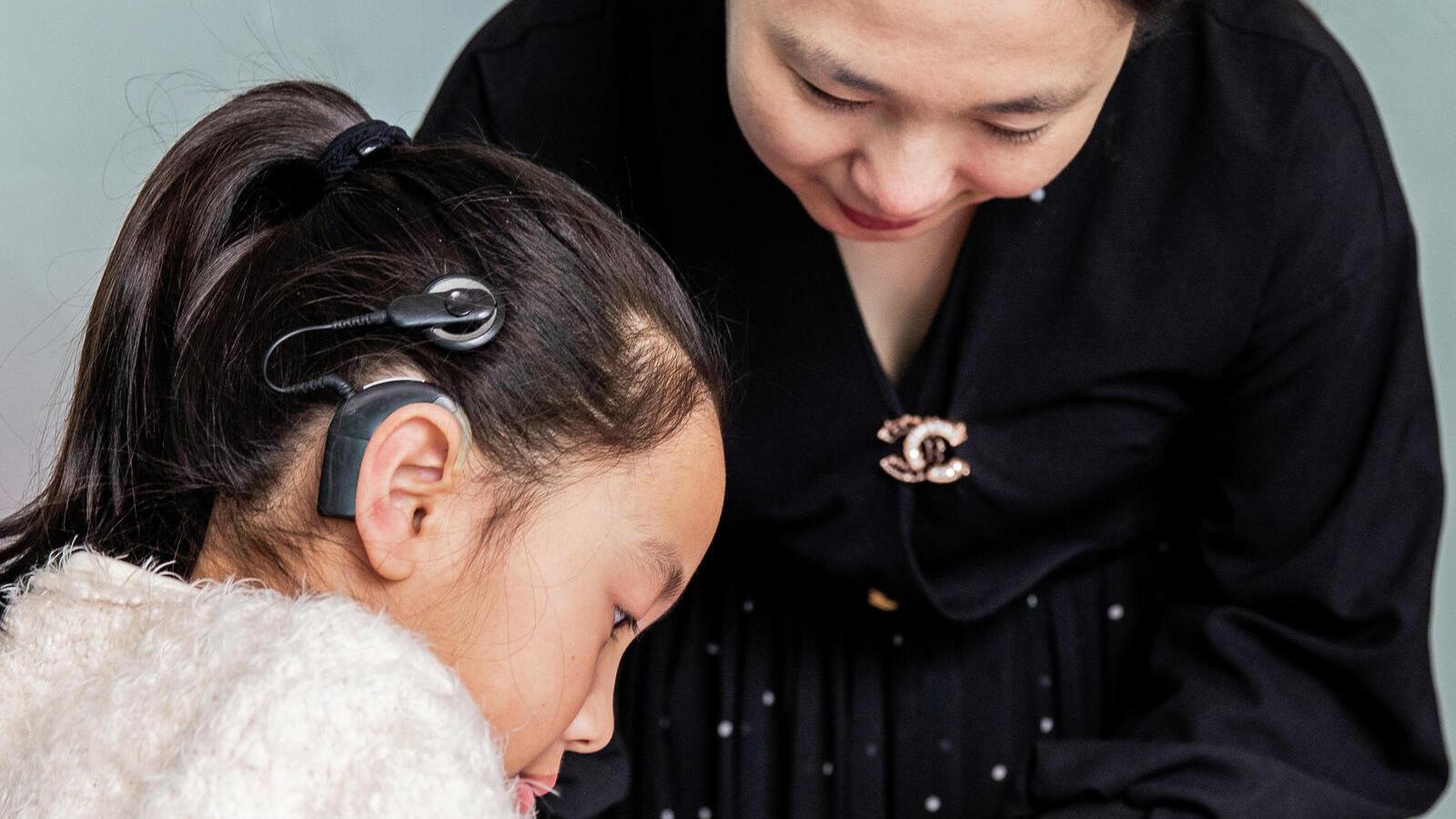MRI and medical considerations
Learn how we design Cochlear™ implants to be compatible with MRI at 3.0 T.
What you'll find on this page
- Information about getting an MRI with a Nucleus® implant.
- Information about getting an MRI with a Baha® implant.
- How Cochlear designs implants that are compatible with MRI scans.
MRI scans can range in strength from 0.2 T to 7.0 T, with 1.5 T being the most common.¹
Cochlear™ Nucleus® Implants: designed for MRI compatibility at 1.5 T and 3.0 T
We designed our latest Nucleus® Profile™ Plus Series Implant so you can have a routine 1.5 T MRI or a high-definition 3.0 T MRI without removing its magnet.2
This means no additional surgery, no need to wear a bandage in an MRI machine, no waiting for your scan and, most importantly, no unnecessary time without sound.
Nucleus Profile and Cl24RE/Freedom® implants are designed to be compatible for MRI at 3.0 T with a magnet removed and at 1.5 T with a magnet in place.2
Alternatives to MRI
Many people never need an MRI scan. For cochlear implant recipients, there is often other technology that can be used instead.
In a recent poll of radiology professionals, 85% agreed they have an alternative diagnostic tool for patients who cannot undergo an MRI due to having a device or implant with a magnet.3
More Cochlear ™ Implant recipients have MRI-compatible implants than any other cochlear implant brand
Cochlear was the first manufacturer to introduce cochlear implants with removable magnets in 1997. Our removable magnet means that a person implanted more than 20 years ago can still access today's MRI technology.
Committed to helping you
MRI compatibility is only one of many considerations when choosing a cochlear implant system.
Combined with our exceptional reliability record and industry-leading electrode technology, everything about our implant design supports our commitment to our recipients.
MRI for Cochlear Baha systems
For the Baha Connect System, as long as the sound processor is removed, you can be scanned by MRI. There will be some slight shadow effects caused by the implant and the abutment.
For the Baha Attract System, as there is an implanted magnet, the system is conditionally approved to 1.5 Tesla and there will be a large area of shadow.
For any additional strength MRI or to reduce shadow area, the magnet can be temporarily removed by a medical procedure. The sound processor should be removed for all MRI scans.
Prior to receiving an MRI, please consult with your Cochlear representatives about proper precautions.
Further information for radiographers:
免責聲明
請向你的醫護人員尋求有關治療聽力損失的建議。效果因人而異,醫護人員會告知你影響治療成效的因素。請必需閱讀說明書使用。並非所有產品在所有國家/地區有售。請聯絡你當地 Cochlear 客戶服務人員以了解產品資訊。
有關 Cochlear 商標的完整列表,請瀏覽我們的使用條款頁面。
1.5 T indication will vary in some markets.
References- The following implants are designed to be compatible for MRI at 1.5 T and at 3.0 T with magnet in place: Nucleus Profile Plus Series: Cl612, Cl622, Cl632. The following implants are designed to be compatible for MRI at 3.0 T with the magnet removed (should your doctor specifically recommend this procedure) and 1.5 T with magnet in place with use of the Cochlear Nucleus Implant Bandage and Splint Kit: Nucleus Profile Series: Cl512, Cl522, Cl532. Nucleus Cl24RE: C1422, Cl24REH, Cl24RE(CA), and Cl24RE(ST)
- Magnetic Imaging Resonance (MRI) Forecast to 2020; Markets and Markets; 2016.
- Radiology Poll conducted by Penn, Schoen, Berland: Survey of 152 practicing radiologists and radiographers, USA, August 2015 (data on file).



